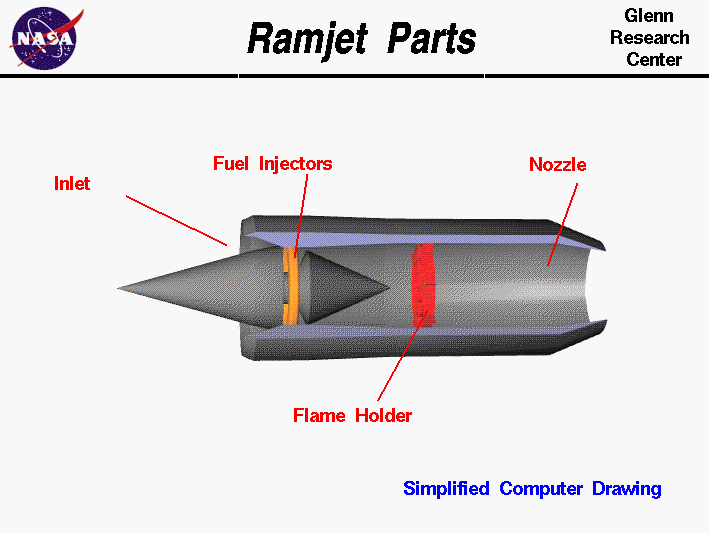
For high supersonic or hypersonic flight,
the ideal propulsion system is a ramjet.
A ramjet uses the forward speed of the aircraft to compress the
incoming air and,
therefore, has fewer moving parts than a turbine engine.
On this slide we show a computer drawing of a typical ramjet
engine. In the computer drawing, we have cut out a portion of the
engine to have a look inside. At the front of the engine, to the
left, is the inlet, which brings outside air
into the engine. At the exit of the inlet, the air is at a much
higher pressure than free stream conditions. Fuel is injected and mixed
for combustion just downstream of the
inlet. The resulting flame is
stabilized in the engine by the red
flame holder ring. This part is very similar to an afterburner
in a fighter jet engine. The hot exhaust
then passes through the nozzle, which is
shaped to accelerate the flow and produce thrust. The
thrust equation
for a ramjet is shown on a separate slide.
To
analyze
ramjet operation, engineers have adopted a numbering
scheme for the various parts. The numbering scheme for the ramjet is
identical to the turbine engine. But the
ramjet has no compressor or turbine. Therefore, some of the numbered
stages are omitted in a ramjet analysis.
You can study ramjet design and operation by using the
EngineSim Applet.
You can vary the performance of any of the engine parts and
investigate the effects on thrust and fuel flow. On the applet,
choose "Ramjet," and any engine part from the image in
the upper left of the program.
Activities:
Guided Tours
Navigation ..


- Beginner's Guide Home Page
|
